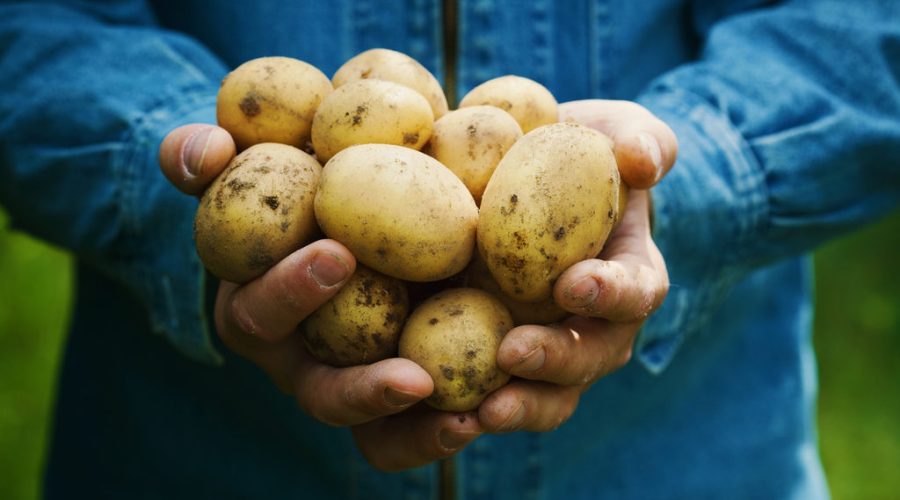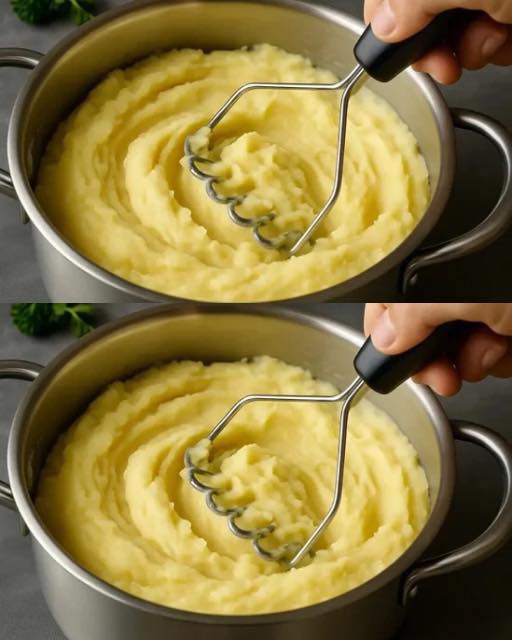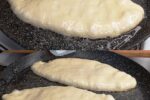Mashed potatoes are one of those must-have side dishes that never disappoint.
When we think of comfort and simplicity, few things compete with good mashed potatoes.
But not all purees are created equal: a little detail when mixing the ingredients can transform that basic side dish into something restaurant-worthy — without complicating your life or dirtying extra dishes.
The trick came from a famous chef: forget the milk or water and embrace the warmed cream .
The result? A silky, flavor-rich puree with that melt-in-your-mouth cloud-like texture. Want to learn? Follow the complete guide below.
Why swap milk for cream?
- More fat, more tenderness – The fat content of the cream coats every particle of potato, creating a smooth, silky emulsion.
- Stable temperature – By heating the cream before adding it to the pan, it doesn’t lower the temperature of the potatoes, ensuring that the mash remains light and velvety.
- Deeper flavor – The butter takes center stage, but the cream adds a sweet touch that balances and enhances the flavors.

Ingredient Checklist
(proportions designed for 1 kg of potatoes; adjust according to your needs)
-
- 1 kg of floury potatoes (asterix is great)
- 175g cold butter, cut into cubes
- Fresh cream or cream from a carton (heated; add gradually until it reaches the desired consistency; can be lactose-free)
- Fine salt to taste
- Optional: pinch of freshly ground white pepper
- To finish: chopped chives or parsley
Dynamic Step by Step
- Peel, cut and cook
- Wash, peel and cut the potatoes into medium pieces.
- Cover with cold salted water (1 level tablespoon of salt per quart is a good average).
- Place over high heat and cook for about 20 minutes, until the pieces fall apart when touched with a fork.
- Dry until light
- Drain all the water and return the potatoes to the still hot pan.
- Keep on very low heat for 2-3 minutes, stirring gently, just to evaporate the remaining moisture.
- Knead without brutality
- While still hot, mash with a manual juicer or classic masher.
- Avoid using a food processor or blender: they activate excess starch and leave the puree elastic.
- Add the butter
- Immediately add the butter cubes so they melt in the residual heat.
- Stir slowly until the fat is fully incorporated.
- Add the hot cream
- Heat the cream (without boiling) in a small saucepan or in the microwave.
- Pour in a thin stream, stirring slowly, until it reaches the consistency of your dreams — neither too thin nor too solid.
- Adjust seasonings
- Taste and adjust the salt.
- If desired, finish with a discreet pinch of white pepper to enhance the aromas.
- Final touch of freshness
- Transfer to a serving dish and sprinkle with chopped chives. This herb adds color and lightness to the dish.
Golden Tips
- The right potatoes, the right mash – Floury varieties have less water and more starch, which guarantees fluffy mash.
- Temperature matters – Both butter and cream should be warm or at least at room temperature. Cold ingredients will chill the mixture and compromise the texture.
- Controlling the consistency – Add the cream in stages: it’s easier to get it creamy than to try to fix it later.
- Elegant repurposing – Got leftover mashed potatoes? Mix cheese into patties, roll them in breadcrumbs, and make a crispy side dish the next day.

Unbeatable Combinations
- Roast beef with wine sauce – The creaminess of the puree balances the full-bodied flavor of the meat.
- Breaded fillet – Crispy crust + velvety mash = perfect match.
- Meatballs in tomato sauce – The tomato sauce finds a smooth base to shine.
- Grilled fish – Contrast of textures without overwhelming the palate.
- Fresh artisan bread – Who said mashed potatoes can’t be the star of a snack?
In short
Changing just one ingredient—substituting hot cream for milk or water—is enough to elevate your mashed potatoes to professional levels.
The technique is simple, the result is luxurious, and approval is guaranteed. Try it at your next meal and discover how one detail makes all the difference in the most comforting dish in home cooking.
Happy preparation and, of course, bon appetit!



